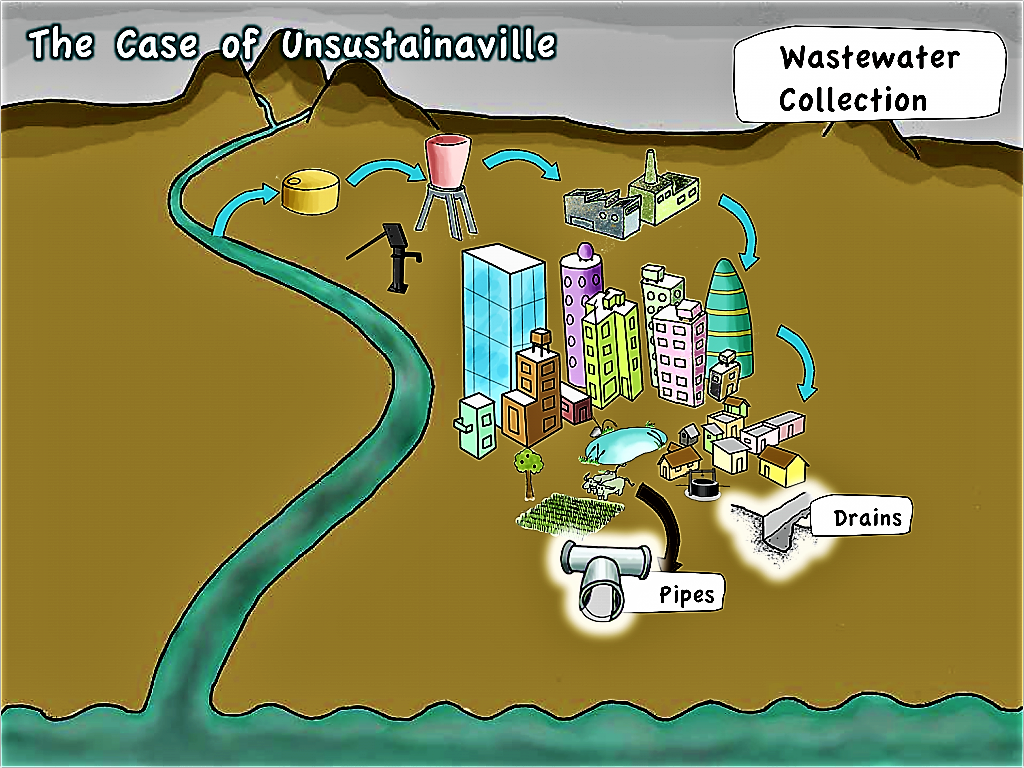Wastewater Collection
In this step, add information on how wastewater is collected to your analysis:
- Where does the used water go?
- Is it collected (e.g. open drainage, piped sewer network, septic tanks, etc.)?
- Is there a centralised sewer networks? Are all parts of your area connected to it? Or do decentralised, household-based solutions prevail?
Where to get further information: The town or city planning should be able to provide more information on this, if it is not obvious.
Interlinkages: In this area, the paramount question that influences other areas of the water and nutrient loop is whether wastewater (i.e. “used water”) is collected at all? If it is — is it treated, and how? If it is not: Which other areas does this influence — clearly the water that is used and discharged within your locality influences the water sources of those further downstream.
The Case of Unsustainaville
Wastewater Collection in Unsustainaville

In Unsustainaville, there are two methods of wastewater collection:
- Collection in pipes
- Collection in drains
Problems with Wastewater Collection in Unsustainaville
Once we look a bit more into the details of wastewater collection, we detect the following problems:
- Many drains do not go to the sewage treatment plant, they just end in the open, leading to stagnant pools of wastewater, polluting the environment and water sources. Furthermore, they are a perfect habitat for flies and mosquitoes, which can transmit further diseases.
- Many families in the low-income areas do have unlined pit toilets, which makes the collection of wastewater from toilets almost impossible.
- The open drains that are used in the low-income areas are very unhygienic. As they are not lined, they directly pollute the shallow wells where people get their water form.
- Furthermore, as solid waste is not collected, the drains are frequently clogged with garbage.
Where do I find further information to tackle wastewater collection problems?
- See the wastewater collection section of the implementation tools.
- To learn how you could start a change process, see planning and process tools.
Previous and Next Step
Go back to previous step ----> How is Water Used?
Go to next step -----> How is Wastewater Treated?
